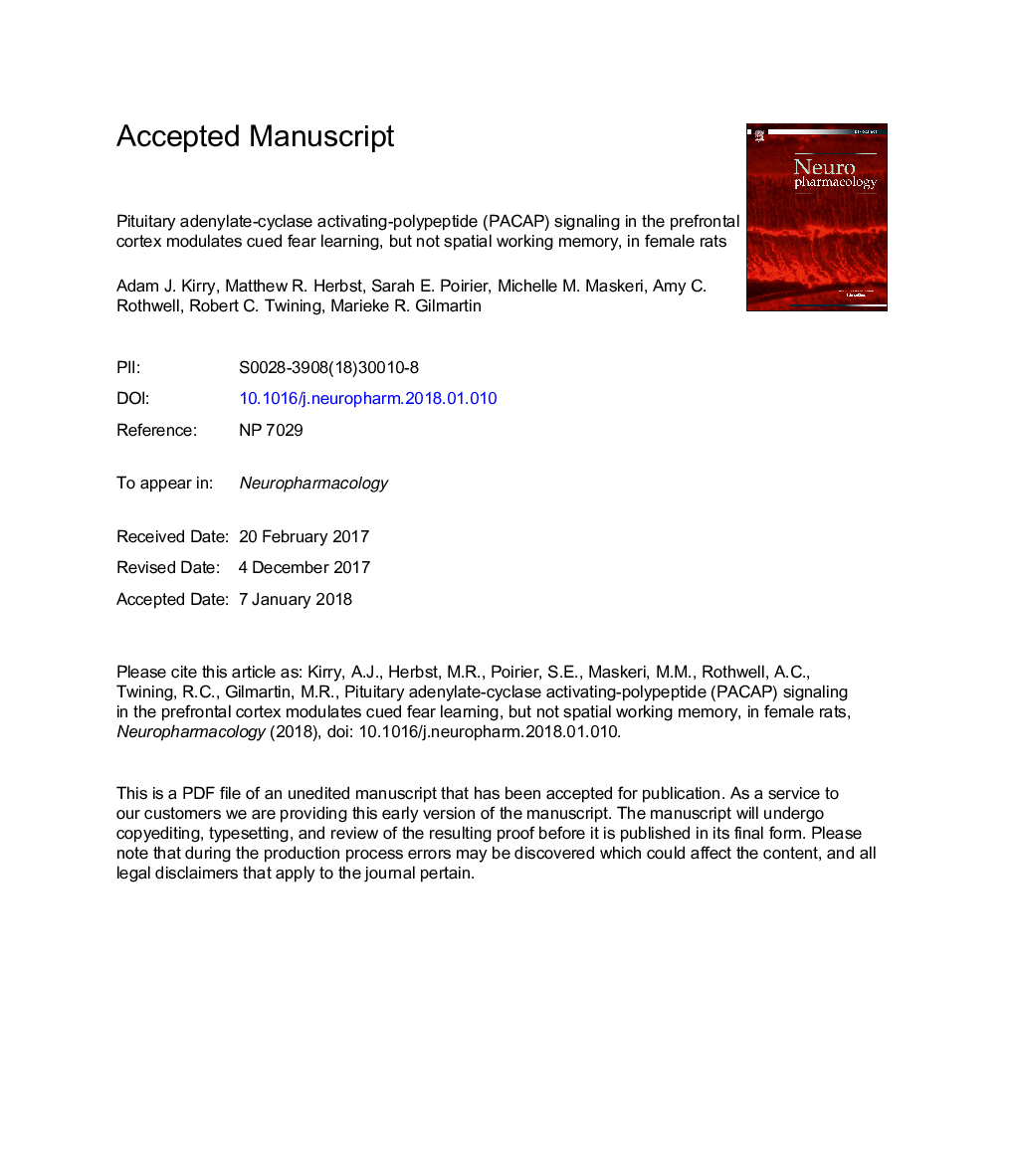| کد مقاله | کد نشریه | سال انتشار | مقاله انگلیسی | نسخه تمام متن |
|---|---|---|---|---|
| 8516994 | 1556584 | 2018 | 41 صفحه PDF | دانلود رایگان |
عنوان انگلیسی مقاله ISI
Pituitary adenylate cyclase-activating polypeptide (PACAP) signaling in the prefrontal cortex modulates cued fear learning, but not spatial working memory, in female rats
دانلود مقاله + سفارش ترجمه
دانلود مقاله ISI انگلیسی
رایگان برای ایرانیان
کلمات کلیدی
موضوعات مرتبط
علوم زیستی و بیوفناوری
علم عصب شناسی
علوم اعصاب رفتاری
پیش نمایش صفحه اول مقاله

چکیده انگلیسی
A genetic polymorphism within the gene encoding the pituitary adenylate cyclase- activating polypeptide (PACAP) receptor type I (PAC1R) has recently been associated with hyper-reactivity to threat-related cues in women, but not men, with post-traumatic stress disorder (PTSD). PACAP is a highly conserved peptide, whose role in mediating adaptive physiological stress responses is well established. Far less is understood about the contribution of PACAP signaling in emotional learning and memory, particularly the encoding of fear to discrete cues. Moreover, a neurobiological substrate that may account for the observed link between PAC1R and PTSD in women, but not men, has yet to be identified. Sex differences in PACAP signaling during emotional learning could provide novel targets for the treatment of PTSD. Here we investigated the contribution of PAC1R signaling within the prefrontal cortex to the acquisition of cued fear in female and male rats. We used a variant of fear conditioning called trace fear conditioning, which requires sustained attention to fear cues and depends on working-memory like neuronal activity within the prefrontal cortex. We found that cued fear learning, but not spatial working memory, was impaired by administration of a PAC1R antagonist directly into the prelimbic area of the prefrontal cortex. This effect was specific to females. We also found that levels of mRNA for the PAC1R receptor in the prelimbic cortex were greater in females compared with males, and were highest during and immediately following the proestrus stage of the estrous cycle. Together, these results demonstrate a sex-specific role of PAC1R signaling in learning about threat-related cues.
ناشر
Database: Elsevier - ScienceDirect (ساینس دایرکت)
Journal: Neuropharmacology - Volume 133, 1 May 2018, Pages 145-154
Journal: Neuropharmacology - Volume 133, 1 May 2018, Pages 145-154
نویسندگان
Adam J. Kirry, Matthew R. Herbst, Sarah E. Poirier, Michelle M. Maskeri, Amy C. Rothwell, Robert C. Twining, Marieke R. Gilmartin,